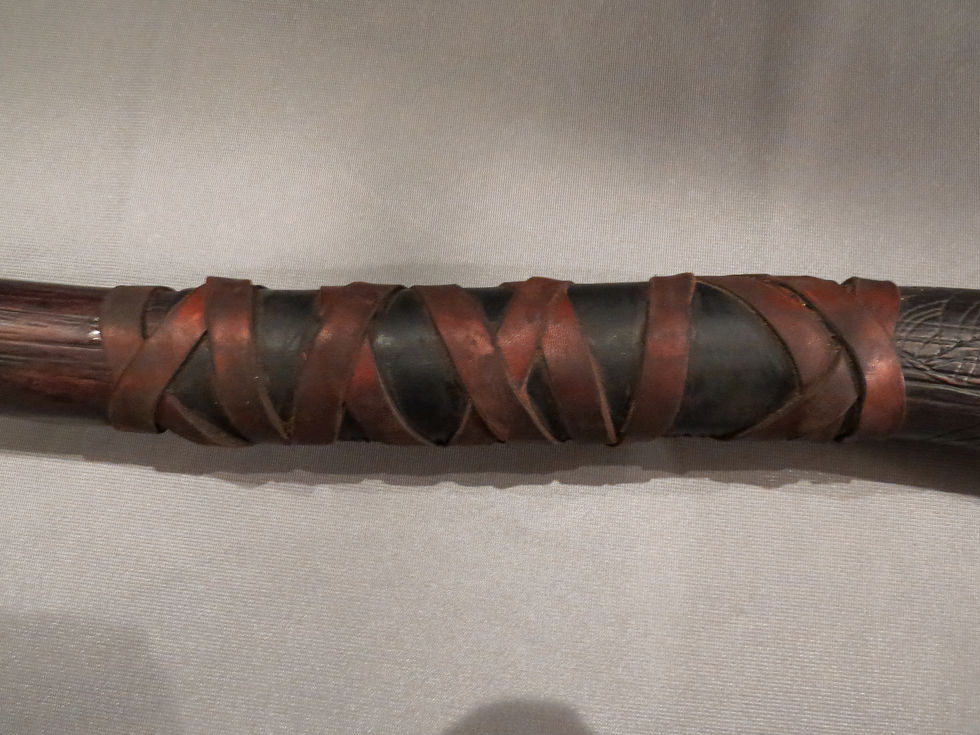Conor Mulligan - Engineering Portfolio

Create Your First Project
Start adding your projects to your portfolio. Click on "Manage Projects" to get started
God of War Leviathan Axe
Description
Forged in the fires of legendary craftsmanship by the Huldra brothers, Brok and Sindri, the Leviathan Axe is a weapon of immense power and deep history. Designed as a counter to the destructive might of Thor’s Mjölnir, the axe is infused with the chilling essence of frost, capable of freezing enemies in their tracks with devastating precision.
Once wielded by Laufey, Kratos’ late wife, the axe carries her legacy, embodying her wisdom and strength. Imbued with the power of runic magic, the Leviathan Axe can be summoned back to Kratos' hand with a mere thought, striking fear into the hearts of his enemies. Its intricate carvings and glowing runes speak of its mystical nature, while its devastating melee and ranged capabilities make it a weapon worthy of the gods.
More than just a tool of war, the Leviathan Axe serves as a symbol of Kratos’ new path—a journey of redemption, fatherhood, and the pursuit of balance in a world of gods and monsters.
Challenges
- Achieving a seamless bond between 3D-printed parts and ensuring structural durability for a large, heavy replica.
- Creating a realistic wood grain effect using layered painting techniques.
- Crafting frosted resin gems that captured the weapon's magical ice aesthetic.
Results
- Produced a highly detailed replica of the Leviathan Axe that balances visual accuracy with durability.
- The final piece is both a display-quality prop and a testament to advanced fabrication techniques.
Engineering Skills Demonstrated
- Structural Reinforcement: Reinforced 3D-printed handle segments with an internal aluminum rod.
- Painting Techniques: Replicated wood grain using layered markers and worn bristle brushes.
- Materials Knowledge: Cast frosted resin gems with custom molds for inlaid details.
- Assembly: Achieved seamless joins between large parts using epoxy and post-processing.
Project Summary:
- Designed and built a full-scale replica of the Leviathan Axe from God of War, showcasing expertise in woodworking, resin casting, and advanced painting techniques to replicate the axe's iconic design and intricate details.
Design and Fabrication Steps:
[1] Handle Construction:
- The handle segments were 3D-printed using Hatchbox Pro PLA on a CR10 Smart Pro 3D printer.
- After printing, the segments were reinforced with a 1/8-inch aluminum rod threaded through their centers to enhance structural integrity and prevent bending.
- The segments were bonded together with epoxy resin, creating a seamless and sturdy structure.
[2] Wood Grain Effect:
- A base coat of Rustoleum Warm Caramel spray paint was applied.
- To simulate realistic wood grain, Copic alcohol markers (E59 Walnut, E79 Cashew, and E57 Light Walnut) were layered on the handle using a worn bristle brush, replicating the texture and color variations of natural wood.
[3] Axe Head Construction:
- Printed in segments using Hatchbox Pro PLA on a CR10 Smart Pro 3D printer.
- The segments were joined with epoxy and smoothed with Rustoleum filler primer and Bondo spot putty.
- The head was painted with TAMIYA Gloss Black lacquer spray paint, followed by a base coat of FolkArt Metallic Gunmetal Gray acrylic paint.
- The blade edges were dry-brushed with a mix of gunmetal and silver paints to simulate a polished steel finish.
[4] Inlaid Gems:
- Created a mold of the printed gem pieces using silicone, then cast the final gems using ultra-clear UV resin dyed with light blue resin pigment to mimic the frosted ice effect.
- The gems were set into the axe head with epoxy for a flawless finish.
[5] Handle Wraps:
- Wrapped the grip section in black leather cut from RingSun Genuine Leather Sheets and stitched using black thread.
- Overlaid a thinner strip of coyote brown leather secured with contact cement, weathered with Fiebing's Vintage Gel in medium brown for an aged look.
[6] Weathering and Finishing:
- A black and brown acrylic wash was applied to all surfaces, emphasizing cracks and crevices. Excess paint was wiped away with a shop cloth for a worn effect.
- The entire piece was sealed with a UV-resistant clear coat to protect the painted finish and details.



























